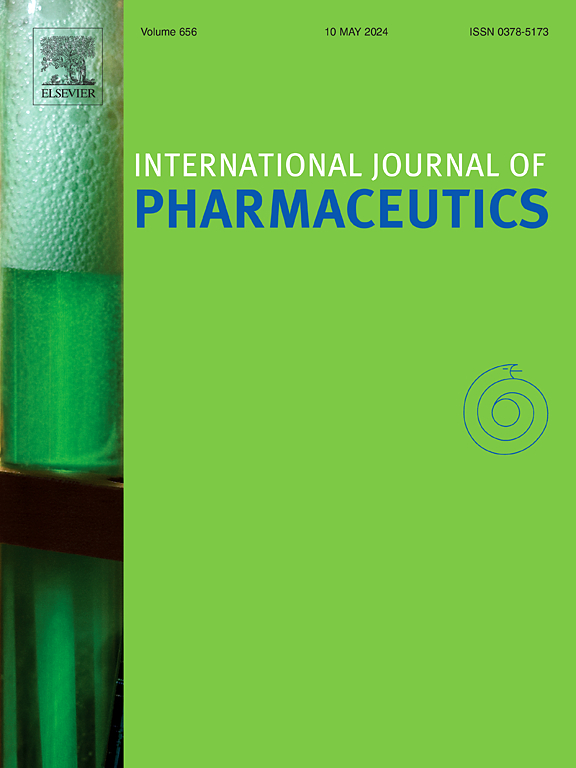Physicochemical characterization and nanochemical analysis of ciprofloxacin hydrophobic ion Pairs for enhanced encapsulation in PLGA nanoparticle
IF 5.3
2区 医学
Q1 PHARMACOLOGY & PHARMACY
引用次数: 0
Abstract
This study investigates the physicochemical transformation of ciprofloxacin (CIP) through hydrophobic ion pairing with five counter ions—sodium oleate, sodium laurate, sodium caprate, disodium pamoate, and sodium deoxycholate—to enhance compatibility with hydrophobic Poly (lactic-co-glycolic acid) (PLGA) nanoparticles. Complexation efficiencies (CE) reached up to 92.26 %, with ciprofloxacin pamoate (CIP-PAM) achieving over 90 % CE at a 1:0.5 M ratio. Differential scanning calorimetry (DSC) and X-ray diffraction (XRD) analyses showed reduced crystallinity across all complexes, with CIP-PAM exhibiting an amorphous form. Optical photothermal infrared spectroscopy (O-PTIR) confirmed uniform complexation within particles, while CIP-PAM displayed a broad peak and weak intensity in the 900–1300 cm−1 region, supporting its amorphous nature. Log P values demonstrated increased hydrophobicity for all complexes, with ciprofloxacin oleate (CIP-OLE) showing a 93-fold increase (p < 0.001). In vitro dissociation patterns varied: CIP-OLE maintained steady release in DW (49.7 %) and PBS (32.3 %) over 48 h, whereas CIP-PAM exhibited strong stability in DW (25.2 %) and a contrasting 68.1 % release in PBS, highlighting solvent-dependent dissociation behaviors. PLGA nanoparticles prepared via S/O/W achieved particle sizes under 200 nm, with CIP-PAM showing the highest encapsulation efficiency (63.02 % vs 17.21 % (CIP)). These findings underscore the importance of counter ion selection to optimize CIP compatibility with hydrophobic carriers, providing a basis for improved drug loading of hydrophilic antibiotics.

求助全文
约1分钟内获得全文
求助全文
来源期刊
CiteScore
10.70
自引率
8.60%
发文量
951
审稿时长
72 days
期刊介绍:
The International Journal of Pharmaceutics is the third most cited journal in the "Pharmacy & Pharmacology" category out of 366 journals, being the true home for pharmaceutical scientists concerned with the physical, chemical and biological properties of devices and delivery systems for drugs, vaccines and biologicals, including their design, manufacture and evaluation. This includes evaluation of the properties of drugs, excipients such as surfactants and polymers and novel materials. The journal has special sections on pharmaceutical nanotechnology and personalized medicines, and publishes research papers, reviews, commentaries and letters to the editor as well as special issues.

 求助内容:
求助内容: 应助结果提醒方式:
应助结果提醒方式:


